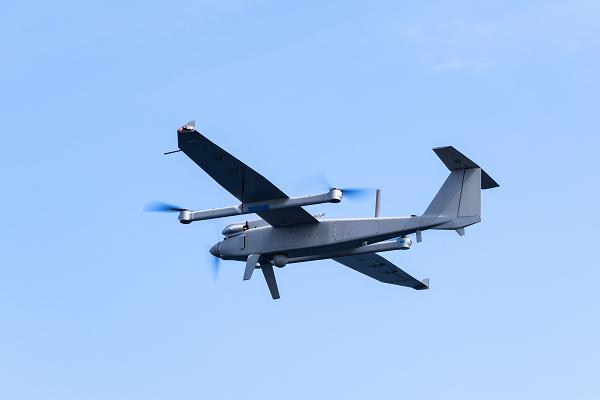
Atlantic Ocean. (June 13, 2025): "If you know the enemy and know yourself, you need not fear the result of a hundred battles." Sun Tzu, The Art of War. Today’s Marines have a new tool to track enemy movements at sea in real time and in all weather conditions. In this photo by Sergeant Nathan Mitchell, a Jump 20 Unmanned Aerial System (UAS) flies a reconnaissance mission while underway with the Amphibious Ready Group, Marine Expeditionary Unit. A product of AeroVironment, the Jump 20 is an artificial intelligence-equipped autonomous aircraft designed specifically for maritime operations.
The plane can take off and land vertically and is equipped with advanced multi-sensor intelligence, surveillance, and reconnaissance capabilities. Designed to be operated at sea, the Jump 20 uses artificial intelligence to precisely land on moving vessels. Measuring nineteen feet long with a nine-foot wingspan, the Jump 20 can be set up and operational in less than 60 minutes without the need for launch or recovery equipment. It can loiter up to thirteen hours above a target and has a range of 115 miles. Powered by a heavy fuel engine for enhanced operational flexibility, the Jump 20 can cruise at a speed of fifty-eight miles per hour at a maximum altitude of 17,000 feet.
Once airborne, the Jump 20 is packed with onboard tracking, stabilization, and video processing equipment. These include advanced navigation and anti-jamming technologies that automatically detect and classify enemy vessels. This involves a diverse range of sensors, including electro-optical/infrared (EO/IR) cameras, signals intelligence payloads, and communication relays. These sensors improve targeting accuracy, extended communication ranges, and comprehensive monitoring of both friendly and adversary forces.
For America’s amphibious forces, the Jump 20 is a pair of eyes in the sky that reveal the enemy and his movements.


